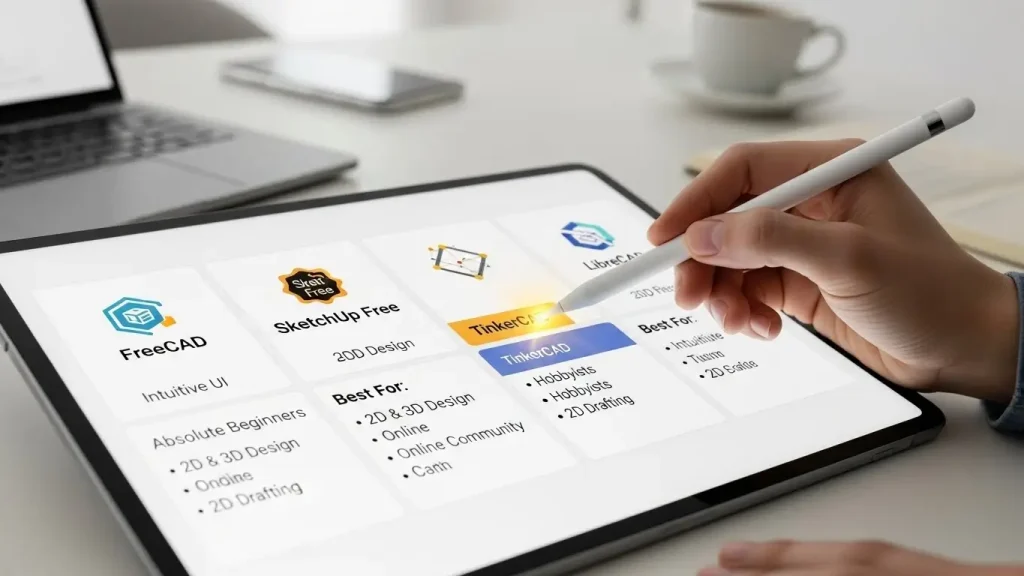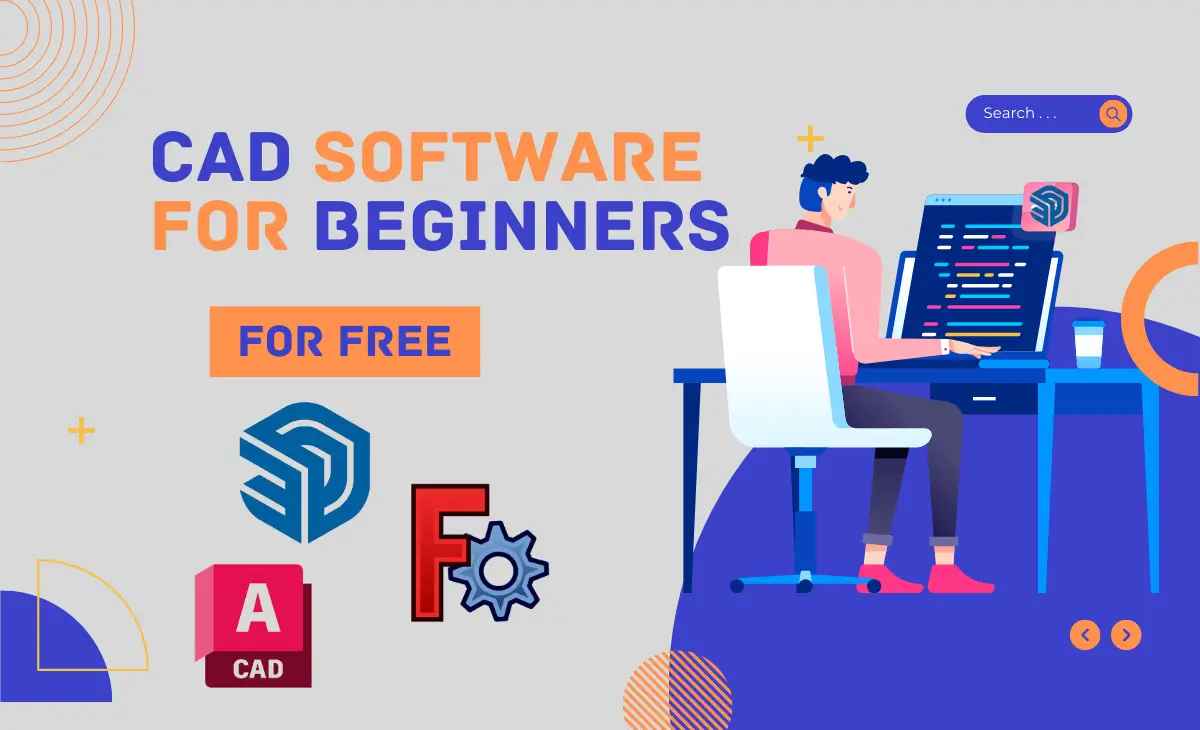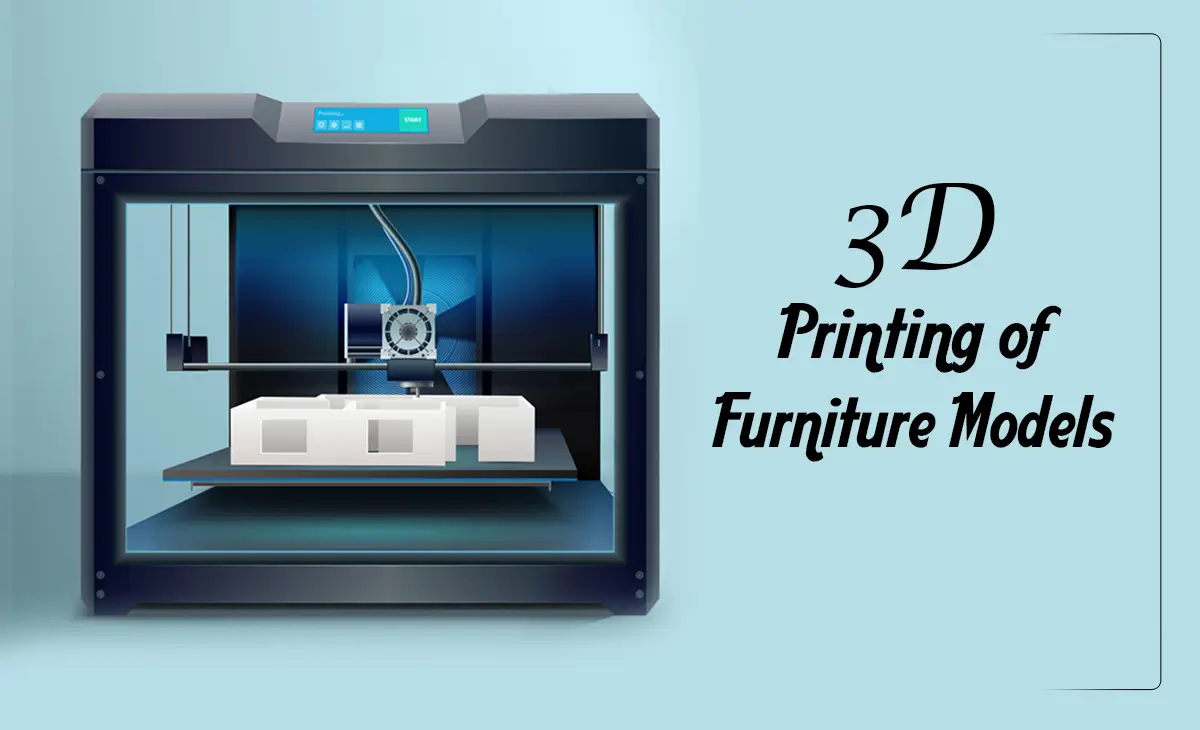In 2024, choosing the right free CAD software for beginners can be important, with so many feature-rich options now available. These tools allow new users to dive into design and create amazing projects without costly software. Whether you’re a student or just starting in design, this guide will help you find the perfect free CAD software to meet your needs.
We’ve created a list of the top free CAD software for beginners. While beginner-friendly, many of these programs also include advanced tools favored by professionals.
What Is CAD Software?
CAD software is a tool that enables you to draw a detailed design on the computer. It is mostly used in engineering, mechanical, cars, and industrial design. It is important to design accurately your desired products and CAD software allows you to happen. However, learning CAD software is important for becoming a designer. Free CAD software can be a good option for your learning period because paid software prices are quite high. On the other hand, you can use free CAD software to get basic learning to limited advanced options. To know more about this you can read free CAD software.

Choosing the Best Free CAD Software for Beginners
Tinkercad
Tinkercad, developed by Autodesk, is one of the best free CAD software options for beginners interested in 3D modeling. It is built for simplicity, offering an intuitive, drag-and-drop interface that allows users to quickly create shapes and models without advanced knowledge of CAD systems. Beginners can easily find pre-made shapes, modify them, and combine them to create basic models, making it ideal for anyone starting with simple 3D designs. The user interface is very easy to understand and helps interested people.
Pros
Easy to learn, even if you are a beginner.
Good for making simple designs and learning about 3D modeling.
It is free and works online, so installing anything is unnecessary.
Cons
Doesn’t have a lot of features, so it’s not good for complicated projects.
Basic tools compared to other advanced design software.
You need to be online to use it.

Free CAD
FreeCAD is a powerful, open-source CAD tool that is ideal for beginners who are ready to take on more sophisticated design projects. FreeCAD is known for its parametric modeling capabilities, which allow users to make changes to their models by adjusting parameters, a useful feature for prototyping and complex design adjustments. For example, users can modify the dimensions of an object without having to re-design it from scratch, a significant advantage for beginners working on both 2D and 3D projects.
FreeCAD’s versatility extends to various fields, including mechanical design, architecture, and product design. Its modular architecture allows users to add functions and tools through plugins, making it highly customizable. However, FreeCAD has a steeper learning curve than Tinkercad, so it may take time to master. Once familiar, though, beginners can access a wide range of functionalities and get hands-on experience with a more advanced CAD environment.
Pros
Its features are powerful, and experts use them for complex projects.
Having an active community provides tutorials, support, and extension.
Free with no licensing costs.
Cons
If you want to become a master in Steeper learning, you need to give more sides.
The steeper learning curve requires more time to master.
You can need extra plugins for features or tasks.

SketchUp
SketchUp Free is a browser-based CAD tool that provides an excellent introduction to CAD for beginners interested in architectural design. Known for its straightforward interface and quick learning curve, SketchUp Free allows users to create and modify shapes in a user-friendly environment. This software is particularly useful for beginners because of its extensive library of pre-made 3D models, which can be downloaded and used in projects, helping new users understand architectural modeling without starting from scratch.
One of SketchUp’s strengths is its ability to visualize and build spaces accurately, making it popular among architecture and interior design beginners. SketchUp Free’s simplicity and accessibility make it a solid choice for anyone just starting with architectural CAD, though users interested in more advanced features may eventually need to explore SketchUp’s paid versions.
Pros
Browser-based, accessible from any device
Extensive library of pre-made 3D models
Easy to learn, especially for architectural concepts
Cons
Limited features in the free version
May require an upgrade for advanced tools and customization

Blender
Blender is one of the most popular free CAD software for beginners for 3D modeling and animation, known for its huge toolset and versatility. While primarily recognized for its animation capabilities, Blender is also a powerful CAD tool for beginners interested in creative modeling, such as character design, game assets, and more. Blender’s popular feature set includes everything from basic 3D modeling to complex rendering and animation tools, making it an excellent starting point for those interested in the artistic side of CAD.
Although Blender is extremely powerful, beginners may find its interface a little bit complex. Fortunately, Blender has a large online community and tutorials and forums, making learning easier. Beginners who are interested in game design, animation, or artistic 3D modeling will find Blender to be an invaluable tool for bringing creative visions to life.
Pros
Powerful 3D modeling and animation capabilities
Extensive online resources and tutorials
Large, supportive community
Cons
Complex interface for complete beginners
Not specifically tailored for architectural or mechanical design
Onshape: Collaborative CAD for Product Design Teams
Onshape
Onshape is a cloud-based CAD software that brings a collaborative approach to 3D modeling. Unlike most CAD programs, Onshape operates entirely in the cloud, allowing teams to work on the same project in real time. For beginners interested in product design and team projects, Onshape provides a unique advantage with its built-in Product Data Management (PDM) system, which ensures that design data is secure, organized, and easily accessible.
Onshape’s intuitive user interface and beginner-friendly design tools make it suitable for those new to CAD who want to work within a collaborative environment. Its cloud-based platform means no software installation is required, making it easy to access from any device. However, Onshape’s free version has many features, and some advanced functions may require a subscription.
Pros
This type of version helps track changes and avoid conflicts.
Version control helps track changes and avoid conflicts.
Offers a comprehensive range of powerful tools for design and engineering.
Cons
Having a good internet connection is important for using this.
It contains a learning curve, so it’s great for beginners to compare various options.
Fusion 360
Fusion 360, another Autodesk product, is a cloud-based CAD software combining CAD, CAM, and CAE tools into one platform. Fusion 360’s comprehensive feature set supports everything from 3D modeling and simulation to machining and 3D printing, making it an ideal tool for beginners looking to explore the full scope of design and manufacturing. The software is particularly useful for product design and engineering projects, as it allows users to test and refine their designs before moving to production.
The free version, Fusion 360 for Personal Use, provides access to an impressive suite of tools and is geared toward hobbyists and beginners. Its all-in-one design setup means that beginners can gradually learn the entire design-to-manufacturing process without switching between different platforms.
Pros
Comprehensive CAD, CAM, and CAE tools
Supports 3D printing and CNC machining
Cloud-based for accessibility from multiple devices
Cons
Requires a free license renewal annually
Some advanced functions may take time to master
Conclusion
Selecting the right free CAD software for beginners is a crucial first step in starting your design journey. With many options available in 2024, finding one that meets your needs can be challenging. This guide covers the top six beginner-friendly CAD programs to help you build foundational skills. Remember, consistency, practice, and experimentation are key to success. As you advance, you may want to explore professional tools like AutoCAD to expand your capabilities further.





